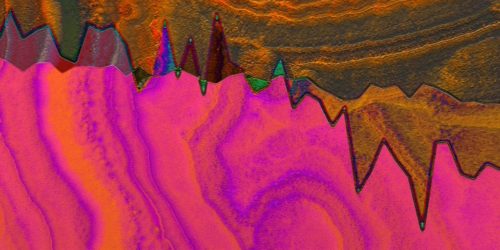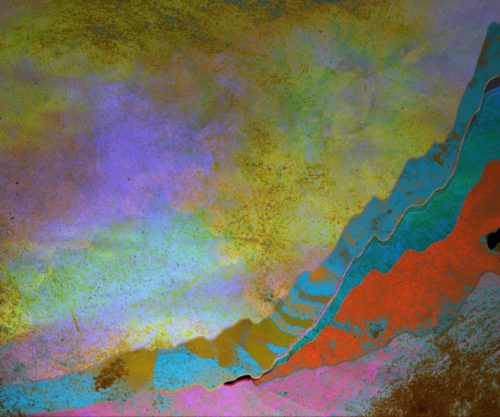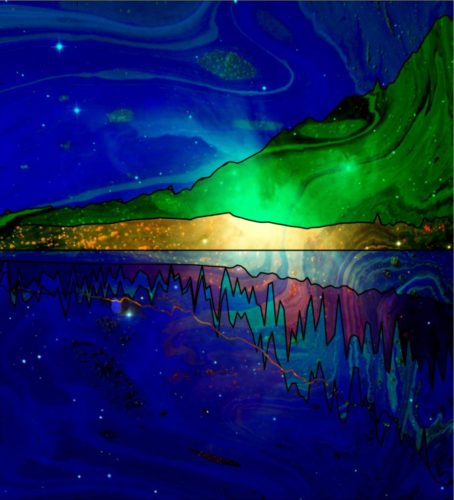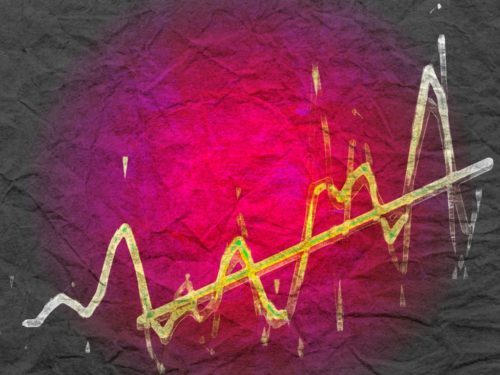First up is Chicago-based artist Alisa Singer. Self-taught, she has worked to create art throughout her life but, since her retirement in 2013, she has focused on her goal of using contemporary art to further meaningful causes.

In 2014 she began the series of digital paintings, Environmental Graphiti – the Art of Climate Change, which uses contemporary art to enhance awareness and understanding of climate change . Each painting is derived from a chart, graph, map, word or number based on a key fact about climate change. There are now over 65 paintings in the series, which continues to evolve. The Environmental Graphiti collection has been extensively exhibited, both in the US and internationally at universities, galleries, conferences and other venues. The art is held by over 30 universities (some of whom have large collections), a major science museum in Toronto, and dozens of private homes. To see the art, review the history of exhibitions, publications and collaborations, and learn more about the project visit: www.environmentalgraphiti.org
We caught up with Alisa recently to learn more about her work and what drives her to engage on climate.
CMP: Tell us about your art.
AS: Environmental Graphiti – The Alarming Art of Climate Change is a series of digital paintings that use contemporary art to enhance public awareness and understanding of the science of climate change. Each piece in the collection of over 75 pieces uses as its “blueprint” a chart, graph, map, word or number relating to a key fact about climate change.
CMP: When did you first become concerned about climate change? How did that concern lead to your art?
AS: I had for some time been more than a little bewildered that the general public wasn’t more alarmed about the compelling facts regarding climate change and how it is impacting our planet. Though an avalanche of compelling graphic data can be found with any Google search, it seemed likely to me that many people were confused or intimidated by data and statistics. It occurred to me that people who would avoid a presentation of charts and graphs might, nonetheless, be happy to look at bright, colorful art, and that art could become the vehicle for “delivering” the facts about our changing world.
CMP: From an artistic perspective, what attracted you to the use of climate data?
AS: I was immediately drawn to the design possibilities of the geometric lines and shapes of scientific charts, graphs and maps, finding these graphic elements to be both dramatic and persuasive. The impressive trajectories pointed clearly in one direction or the other, e.g., upwards, to reflect the inevitable correlation between temperature rise, carbon emissions, and rising ocean levels, or downwards to reflect the Arctic sea or land-based ice melt. In addition, the many key indicators of climate change (including increased heat, intense storms, drought, famine, flooding, forest fires, risks to human health and marine and other forms of wildlife, and so many more), offered an endless variety of approaches to the presentation of the data.
CMP: How does your art deliver your message?
AS: Though each painting appears to be abstract, and is intended to stand on its own as a work of art, it is displayed with a wall plaque depicting the underlying climate data source, and explaining its significance. Once the viewers realize they are not looking at mere abstract images they are intrigued and a kind of “double take” occurs. Moving back and forth from art to graph, and from one piece to the next, they try to decipher how the data is reflected in the art. As a result of this process, the viewer becomes more engaged in both the art and the underlying message.
CMP: How can art help to accelerate action on the climate crisis and do you think that visual art “works” differently than music in this context?
AS: Although some people may prefer visual arts, just as some may prefer music, both forms offer similar benefits towards accomplishing the mission of climate change awareness by serving as unique, non-confrontational ways to attract people to the issue. Art, like science, is universal and inherently apolitical. As such it can cross borders and bring people of all backgrounds into the conversation. Recently, I was asked to create an image for the cover of the landmark report, “Global Warming of 1.5°C” released by the United Nation’s climate council, The Intergovernmental Panel on Climate Change. It was the first time the IPCC had used art on the cover of a report and it was a testimony to the belief in its global appeal.
I believe powerful synergies arise from the combination of art and science: Art makes the science more accessible, just as science makes the art more meaningful.
CMP: What advice would you give to someone who wants to get involved in climate action?
AS: Find your unique area of strength and interest and capitalize on it. Be creative – there are so many ways to tell this story.
CMP: Where can people see your art?
AS: The full collection can be seen on my website – environmentalgraphiti.org – which is divided into four galleries: WHY is our climate changing? HOW is climate change affecting our world? WHO is at risk? and WHAT can we do to address climate change? Currently there is a yearlong exhibit of the art at The Peggy Notebaert Nature Museum in Chicago, and the art is on permanent display at other locations.
**********



